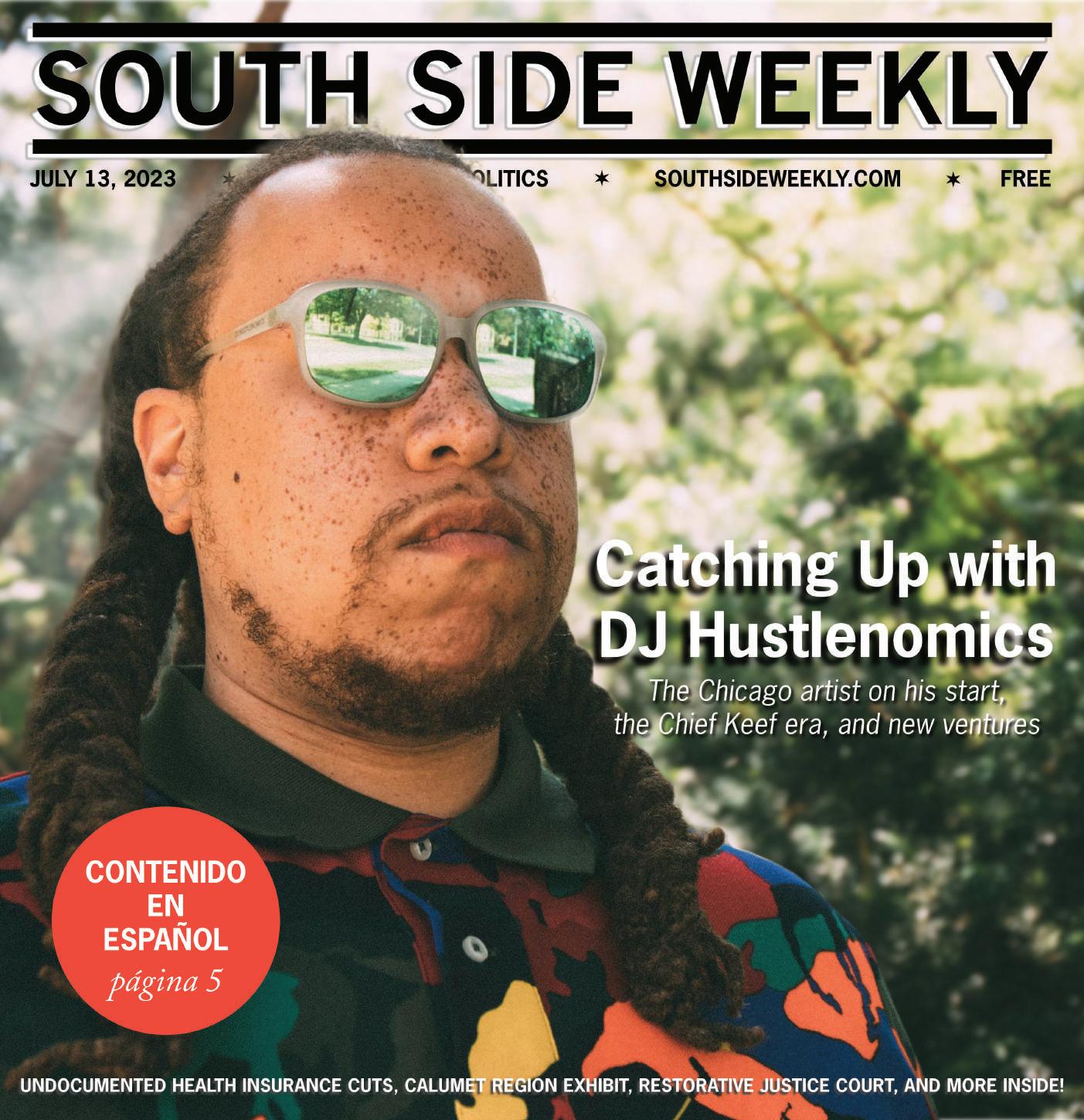








2 SOUTH SIDE WEEKLY ¬ JUNE 29, 2023 800 East 55th St. Parking Lot East of Cottage Grove Saturday, July 22nd 12 PM-4PM School Physicals: Scan this QR Code. Complete forms and bring copies to event. Appointments first come first serve. School Physicals Back to School Giveaways Ambulance Tours Fire& Bike Safety Car Seat Safety Prenatal Education And much more! Chicago, IL Remoc's Remoc's Family Safety Fair Family Safety Fair Games& Activities
SOUTH SIDE WEEKLY
The South Side Weekly is an independent non-profit newspaper by and for the South Side of Chicago. We provide high-quality, critical arts and public interest coverage, and equip and develop journalists, artists, photographers, and mediamakers of all backgrounds.
Volume 10, Issue 20
Editor-in-Chief Jacqueline Serrato
Managing Editor Adam Przybyl
Senior Editors Martha Bayne
Christopher Good
Olivia Stovicek
Sam Stecklow
Alma Campos
Politics Editor J. Patrick Patterson
Labor Editor Jocelyn Martínez-Rosales
Immigration Editor Wendy Wei
Community Builder Chima Ikoro
Public Meetings Editor Scott Pemberton
Contributing Editors Jocelyn Vega
Francisco Ramírez Pinedo
Visuals Editor Kayla Bickham
Deputy Visuals Editor Shane Tolentino
Staff Illustrators
Director of
IN CHICAGO
Goodbye Jason!
Jason Schumer joined the Weekly as a volunteer photographer and to help deliver the newspaper in 2016. Over the years, he took on more operational responsibilities, from distribution and mail to office management and ad sales. In 2018, Jason officially became the executive director of the Weekly, and helped us secure our first operating grant in 2019, propelling the Weekly to a more sustainable and professional future.
From stepping in at the last minute to take photos for dozens of blurbs in Best of the South Side, to helping coordinate coverage when editors were short-staffed, Jason has played a big role in keeping the paper running and the stories flowing. He worked on making last year’s merger with Hyde Park Herald possible, helping save the historic paper and create a new nonprofit entity with more growth to come. Jason’s been a thoughtful manager, a frequent collaborator, and an excellent grillmaster whenever we’ve convened on the patio for socials and events. Jason is moving on to Operations Manager at Injustice Watch, where we wish him the best. Congratulations!
Historic flooding hits Chicago homes and roads
IN THIS ISSUE
what to know about illinois’s pause on health insurance programs for undocumented immigrants
“These policy changes will have real world devastating effects on families who have lived, worked, and paid taxes in Illinois for many years.” jade-ruyu yan ..........................................
4 lo que debe saber sobre los cortes a los programas de seguro médico para indocumentados
El cambio significa que las personas indocumentadas verán limitado su acceso a dos programas de seguro médico financiados por el estado y enfrentan costos si ya están inscritos. por jade-ruyu yan traducido por alma campos ................. 5 the exchange
The Weekly’s poetry corner offers our thoughts in exchange for yours.
chima ikoro .............................................
8
Mell Montezuma
Shane Tolentino
Fact Checking: Savannah Hugueley
Fact Checkers: Kelli Jean Smith
Kate Linderman
Christopher Good
Alani Oyola
Jade-Ruyu Yan
Layout Editor Tony Zralka
Special Projects
Coordinator Malik Jackson
Managing Director Jason Schumer
Office Manager Mary Leonard
Advertising Manager Susan Malone
Webmaster Pat Sier
The Weekly is produced by a mostly all-volunteer editorial staff and seeks contributions from across the city. We publish online weekly and in print every other Thursday.
Send submissions, story ideas, comments, or questions to editor@southsideweekly.com or mail to:
South Side Weekly 6100 S. Blackstone Ave. Chicago, IL 60637
For advertising inquiries, please contact: Susan Malone (773) 358-3129 or email: malone@southsideweekly.com
For general inquiries, please call: (773) 643-8533
After a week of flood warnings, Chicago saw highways, roads, and more than 2,000 basements flooded. On July 3, some of the neighborhoods hit the hardest included Garfield Park, Midway, and Bridgeport—Garfield Park alone received 8.12 inches of rain. According to WTTW, the last time Chicago saw nine inches of rain was in 1987. While some residents were left to deal with the arduous task of pumping water out of their basements, many took rafts to the flooded streets to make the best of extreme weather conditions.
The I-55 was subsequently closed and eastbound lanes on 290 were shutdown. Cars were stuck in the high waters leaving many questioning the city’s responsibility to mitigate increased flooding. While Brandon Johnson expressed intent to use funds from the 2021 Bipartisan Infrastructure Deal to improve the city’s framework, on the city’s website, the only responsibility the city assumes is for “placing restrictors—known as ‘Rain Blockers’—in [catch basins] all over town.” Residents in the West side of Chicago, including the nearby suburbs, were the hardest hit with some reporting water levels reaching three feet in their homes.
Migrants transferred out of police station; police under investigation for sexual misconduct
Last week, the Civilian Office of Police Accountability (COPA) launched an investigation after learning of allegations of inappropriate sexual contact between police and migrants sheltered at the 10th district police station, which serves the North Lawndale and La Villita areas. Community members—including members of the Ogden Police District Council—protested outside of the station the next day to denounce the abuse and demand transparency from CPD, which had yet to release a statement or provide details of the allegations. Various 10th district officers are accused of engaging in inappropriate sexual contact with migrants, and one officer of impregnating a teenage girl. A spokesman later said the department’s bureau of internal affairs is investigating. On Friday afternoon, about forty migrants were transferred out of the station without advance notice.
“ThoughtPoet” Veney
op-ed: south shore residents ask ‘what about us?’ a cba is the city’s chance to deliver for them
The CBA ordinance would bring housing stability to a neighborhood that leads the city in evictions and prepares for the construction of the Obama Center. brandon patterson ................................
9 40,000 house heads turn out for chosen few picnic and festival
The picnic and house music festival has been hosted in the park by the South Side DJ collective Chosen Few since 1990.
michael liptrot and max blaisdell, hyde park herald 10 workers at museum of science and industry unionize
PPE accommodations and pay inequity among issues that spurred the union drive.
malik jackson
12 dj hustlenomics on his start, the chief keef era, and new ventures He is rarely seen or heard, but his impact is felt— people don’t realize that he helped launch the careers of prominent Chicago artists.
kia smith
restorative justice court promises an alternative for young adults
The practice is part of an approach to addressing harm that brings together those affected and their community.
max blaisdell ........................................
public meetings report
A recap of select open meetings at the local, county, and state level
14
17
19 congo square theatre puts on a festival for the community
scott pemberton and documenters
On July 29, the third of three theater festivals will take place at the Silver Room Block Party.
kristian parker ..................................... 21 ‘soot on the windows meant food on the table’
A Field Museum exhibit highlighting the heritage of the Calumet region, and the last in a series of four stops, will come to a close this fall.
nabeela washington ............................. 22
Cover photo by Isiah
What to Know About Illinois’s Pause on Health Insurance Programs for Undocumented Immigrants
BY JADE-RUYU YAN
People in Chicago have demonstrated in recent weeks after Governor J.B. Pritzker’s decision to limit enrollment to two state-funded health insurance programs—some of the only health insurance options for lowincome undocumented people in Illinois.
“There are people who may forgo cancer treatment, diabetes care, mental health care, and countless other kinds of necessary medical treatment because of the cost,” said Tovia Siegel, director of the Healthy Illinois Campaign, which aims to create state-wide equitable healthcare, in an email to the Weekly.
“These policy changes will have real world devastating effects on families who have lived, worked, and paid taxes in Illinois for many years.”
The health insurance plans, Health Benefits for Immigrant Adults (HBIA) and Health Benefits for Immigrant Seniors (HBIS), which are Medicaidstyle programs created in 2020, cater to people who are low-income, and who are undocumented or who have green cards but haven’t completed the five-year waiting period. Those eligible include people aged forty-two to sixty-four, and sixty-five and above, respectively.
The program for adults, HBIA, stopped taking applications as of July 1, while the program for seniors, HBIS, will also stop enrollments when it reaches 16,500 people, according to this change. There were 63,255 residents enrolled in both programs as of June 7, according to
the Illinois Answers Project.
The move was framed as a temporary “pause” to enrollments in an announcement on June 16 by Illinois’ Department of Healthcare and Family Services (HFS). As of this article’s publication, it has not been made clear when this “pause” will be lifted.
Why did this happen?
The pause on these programs has been identified as a compromise by Pritzker in order to finalize Illinois’ budget.
According to Pritzker’s administration, the program was more costly than expected. Although it was estimated that the first year would cost $2 million, it was actually closer to $50 million, Pritzker spokesperson Jordan Abudayyeh told the Illinois Answers Project.
The decision drew backlash from healthcare organizers and Latinx lawmakers such as U.S. Rep. Delia Ramirez, who called the argument that the program is too expensive a “pretense” and said that the “alleged costs of the program are in question” in a statement.
“A lot of Americans (don’t) understand that having uninsured people is bad for all of us,” said Mark Kuczewski, professor of medical ethics at the Loyola University School of Medicine who has focused on health equity for immigrant patients.
Although it can be “difficult to run a health insurance program strictly at the
state level… the fact is that we can’t really save money for Illinoisans by not doing it,” he said. “This is one of the things that I think a lot of people don’t understand: [people who are insured] pay for the uninsured, whether it’s through taxes" or an increase in premiums, he said. There is "a cost shifting all the time for the uninsured.”
When people who are uninsured come in for emergency care–“when they're really sick, because they don't come in a minute sooner than that: they don't want to come if they're uninsured,” said Kuczewski–hospitals “pass that along to the people who come with paid policies.”
But “that’s kind of hidden” whereas “state budget is transparent,” so it seems like we’re saving money even though we’re not, he said.
Illinois is one of few states to have had this type of state-funded health insurance for undocumented immigrants. California extended its state-funded Medicaid in 2020 to cover young adults and later expanded it to cover adults aged fifty and older, while Oregon similarly provided state-funded insurance with its “Cover All People” act in 2021, according to the Kaiser Family Foundation.
If I’m not enrolled in these programs, how will I be affected?
The program for adults, HBIA, is now closed to enrollment without a date as to when it will reopen. The program
for seniors, HBIS, is technically open but will close when it reaches the 16,500 cap. People over sixty-five who are eligible for HBIS should “apply right away,” said Andrea Kovach, senior healthcare attorney with the Shriver Center on Poverty Law. “Even if you are unsure whether you’re eligible, just get that application in.” As of June 26, there were already nearly 15,000 people enrolled in HBIS, according to the Illinois Answers Project.
People can find instructions to apply for both programs here and here (for brochures in English or other languages, go here and here.) There are also organizations that help people apply for programs in several languages, including Spanish here: https://widget. getcoveredamerica.org/.
If I’m already enrolled for one of these plans, how will I be affected?
People already enrolled in both programs will continue to be covered, according to HFS, but they will incur new costs if they have services that are not deemed eligible to be reimbursed by the federal government.
Costs would include a $250 copay for inpatient hospitalization and a $100 copay for emergency room visits.
“In order to be eligible for these two programs (to begin with), you have to be very very low income,” said Kovach, so “a $100 copay or a $250 copay could be a significant portion of your
4 SOUTH SIDE WEEKLY ¬ JULY 13, 2023 POLITICS
The change means undocumented people’s access to two state-funded insurance programs, Health Benefits for Immigrant Adults and Health Benefits for Immigrant Seniors, is limited—and that they will encounter new costs if they’re already enrolled.
monthly income. These copayments are exceptionally high.”
It’s also often “very unclear” to the patient going into treatment whether the services are federally reimbursable, she said.
There is also a ten percent coinsurance—which is the percentage of costs that patients will still have to continue pay themselves, even after they’ve met their deductible —for hospital outpatient services or ambulatory surgery centers. The deductible is a fixed amount they have to pay initially before their insurance will begin to pay anything.
If you’re confused about when you’ll need to pay the copay or coinsurance, it’s because it’s confusing. People will have to “navigate a world of uncertainty” because it’s unclear which services will incur these costs, said Kovach, specifically because it’s unclear what is considered reimbursable by the federal government.
As of July 5, HSF hadn’t informed healthcare providers what would be considered federally reimbursable services, said Kovach. “Until we see such a notice, we are also unable to provide information to enrollment assisters and others who work with immigrants enrolled in HBIA and HBIS,” she said.
It’s also unclear whether hospitals will charge the copay to begin with, because they have the choice to take on the cost themself—“but they don’t have to,” said Kovach.
What does the future of this program look like?
For impacted people who are wondering what their options are in the short-term: although you’re not eligible for federal programs such as Medicaid or the Affordable Care Act (ACA) marketplace if you’re undocumented, there are still federally qualified health centers, free clinics and community health centers that you can turn to, according to Siegel.
You can also qualify for financial assistance programs from hospitals such as CareLink (you can find information by scrolling down on this webpage: https://cookcountyhealth.org/patientsvisitors/billing-insurance/), which is Cook County Health system’s financial aid program, or Emergency Medicaid for some emergency medical services that
qualify, she said.
And some people—including those who have had their green card for less than five years, those who are on temporary protected status or those who were granted parole for less than one year—are eligible for the ACA marketplace. If you’re in one of those groups, you can sign up for those plans starting November 1 this year, although check that you don’t qualify for a special enrollment period that would let you sign up sooner, said Siegel.
And in the long term, “I would be very surprised if this program doesn’t continue its march forward over time,” said Kuczewski. “It may be in fits and starts for a little while [and] there may be a need to find new revenue source for it” but “I’d be surprised if regressive politics does this in in the long run,” he said.
What can I do in the meantime?
“It’s important to call attention to the issue and pressure (politicians) to call attention to these kinds of programs,” said Kuczewski, referencing the work that Latinx politicians and immigrant rights advocacy organizations have done in recent weeks to protest the change.
While “we don’t want to suddenly say our politicians are evil—they’re talking about a pause—we want to make sure it’s just a pause,” he said.
Siegel urged people to contact Pritzker’s office as well as state legislators. You can find contact information on government websites by Googling “contact state legislators” or “contact Illinois governor” and “tell them to rescind these policy changes.”
People can also get involved with one of the organizations under the Healthy Illinois campaign and join efforts to advocate against the change, she said, and if you are among those who are affected by the change, you can contact Healthy Illinois to share stories of how they and their family are being impacted.
Kovach also advised that applicants stay connected with organizations such as the Immigrant Family Resource programs and Illinois Welcoming Centers that serve people who are immigrants. ¬
Jade-Ruyu Yan reports on how your access to healthcare is affected by business and politics.
Lo que debe saber sobre los cortes a los programas de seguro médico para indocumentados
POR JADE-RUYU YAN TRADUCIDO POR ALMA CAMPOS
Residentes de Chicago protestaron en semanas recientes tras la decisión del gobernador J.B. Pritzker de limitar la inscripción a dos programas de seguro médico financiados por el estado. Estos programas son de las pocas opciones de seguro médico para las personas indocumentadas de bajos ingresos en Illinois.
“Hay personas que pueden quedarse sin tratamiento contra el cáncer, de la diabetes, atención a la salud mental, y un sinfín de otros tipos de tratamiento médico necesario debido al costo”, dijo Tovia Siegel, directora de la campaña de salud, Healthy Illinois Champaign, en un correo electrónico al Weekly. La campaña tiene como objetivo crear equidad en el cuidado de la salud en todo el estado.
“Estos cambios políticos tendrán efectos devastadores para las familias que han vivido, trabajado y pagado impuestos en Illinois durante muchos años”.
Los planes de seguro médico, bajo los nombres Health Benefits for Immigrant
Adults (HBIA, por sus siglas en inglés) y Health Benefits for Immigrant Seniors (HBIS, por sus siglas en inglés), que son programas estilo Medicaid creados en 2020, atienden a personas de bajos ingresos y que son indocumentados o residentes permanentes que no han completado el período de espera de cinco años. Los que califican son personas de 42 a 64 años y de 65 o más, respectivamente.
El programa para adultos, HBIA, dejó de aceptar solicitudes a partir del 1 de julio, mientras que el programa para personas de la tercera edad, HBIS, también interrumpirá las inscripciones cuando alcance los 16,500 beneficiarios. Había 63,255 residentes inscritos en ambos programas el 7 de junio, según la organización Illinois Answers Project.
El 16 de junio, el Departamento de Cuidado de Salud y Servicios para Familias (HFS, por sus siglas en inglés) de Illinois anunció que esto se trataba de una “pausa” temporal en las inscripciones. No se ha dicho cuándo terminará dicha “pausa”.
JULY 13, 2023 ¬ SOUTH SIDE WEEKLY 5 POLÍTICA
El cambio significa que las personas indocumentadas verán limitado su acceso a dos programas de seguro médico financiados por el estado y enfrentan costos si ya están inscritos.
¿A qué se debe esta pausa?
La pausa en estos programas es un recorte del gobernador de Illinois, J.B. Pritzker, para finalizar el nuevo presupuesto de Illinois.
Según su administración, el programa fue más costoso de lo que esperaban. Aunque se estimó que el primer año costaría $2 millones, en realidad costó cerca de los $50 millones, dijo el portavoz de Pritzker, Jordan Abudayyeh, según Illinois Answers Project.
La decisión provocó reacciones en contra por parte de promotores de la salud y legisladores latinos, como la congresista Delia Ramírez del nuevo Distrito 3 que en un comunicado señaló que el argumento de que el programa era demasiado caro es una “excusa” y que “los supuestos costos del programa están en cuestión”.
“Muchos estadounidenses [no] entienden que tener gente sin seguro es malo para todos”, dijo Mark Kuczewski, profesor de ética médica en la Escuela de Medicina de la Universidad de Loyola, que se ha enfocado en la equidad en la salud de los pacientes inmigrantes.
Aunque puede que sea “difícil gestionar un programa de seguro médico estrictamente a nivel estatal... el hecho es que realmente no podemos ahorrarle dinero a los habitantes de Illinois al no hacerlo”, dijo. “Esta es una de las cosas que creo que mucha gente no entiende. [Las personas que están aseguradas] pagan por las que no lo están, ya sea a través de los impuestos” o de un aumento en las tarifas del seguro, dijo. Hay “un movimiento de gastos constante para los no asegurados”.
Pero “eso está medio oculto”, mientras que “el presupuesto estatal es claro”, por lo que parece que estamos ahorrando dinero, aunque no sea así, dijo.
Illinois es uno de los pocos estados que han tenido este tipo de seguro médico financiado por el estado para inmigrantes indocumentados. California extendió su Medicaid financiado por el estado en 2020 para cubrir a los adultos jóvenes y más adelante lo amplió para cubrir a los adultos mayores de 50 años. Oregón proporcionó de manera similar un seguro financiado por el estado en 2021, según la fundación Kaiser Family Foundation.
Si no estoy inscrito en estos programas, ¿me veré afectado?
El programa para adultos, HBIA, está ahora cerrado sin fecha de reapertura. El programa para personas mayores, HBIS, está técnicamente abierto pero se cerrará cuando alcance el las 16,500 personas.
Las personas mayores de 65 años que cumplan los requisitos para beneficiarse del HBIS deben “solicitarlo de inmediato”, dijo Andrea Kovach, abogada del centro Shriver Center on Poverty Law. “Incluso si no está seguro de cumplir los requisitos, de todos modos presente la solicitud”. Hasta el 26 de junio, ya había casi 15,000 personas inscritas a HBIS, según Illinois Answers Project.
Las personas pueden encontrar instrucciones para solicitar ambos programas en hfs.illinois.gov. También hay organizaciones que ayudan a las personas a solicitar programas en varios idiomas, incluyendo el español en getcoveredamerica. org.
Si ya estoy inscrito en uno de estos planes, ¿cómo me veré afectado?
Las personas ya inscritas en ambos programas seguirán teniendo cobertura, según HFS, pero enfrentarán nuevos costos si reciben servicios médicos que no se consideran elegibles para ser reembolsados por el gobierno federal.
Los costes incluirían un copago de $250 por hospitalización y un copago de $100 por visitas de emergencia.
“Para ser elegibles para estos dos programas (para empezar), tienes que tener ingresos muy bajos”, dijo Kovach, por lo que “un copago de $100 o de $250 podría significar una parte importante de tus ingresos mensuales. Estos copagos son excepcionalmente altos”.
A menudo, el paciente no tiene muy claro si los servicios son reembolsables a nivel federal.
También hay un copago del 10 por ciento —el porcentaje de los costos que los pacientes tendrán que seguir pagando, incluso después de haber pagado su deducible— para los servicios ambulatorios del hospital o de los centros de cirugía ambulatoria. El deducible es una cantidad
fija que las personas tienen que pagar inicialmente antes de que su seguro comience a cubrir los gastos médicos.
Si está confundido sobre el copago es porque el proceso en sí es confuso. La gente tendrá que “navegar un mundo de incertidumbre” porque no está claro cuáles servicios incurrirán en estos costos, dijo Kovach.
Hasta el 5 de julio, HSF no les había informado a los proveedores de cuidado médico lo que consideraría servicios reembolsables a nivel federal, dijo Kovach. “Hasta que no recibamos dicha notificación, tampoco podremos pasar la información a los asistentes de inscripción y a otras personas que trabajan con inmigrantes inscritos en HBIA y HBIS”, dijo.
Tampoco está claro si los hospitales cobrarán el copago al principio, porque tienen la opción de asumir estos costos ellos mismos, “pero no están obligados”, dijo Kovach.
¿Cuál es el futuro de este programa?
Para las personas afectadas que se preguntan cuáles son sus opciones a corto plazo: aunque usted no es elegible para los programas federales como Medicaid o la Ley del Cuidado de Salud a Bajo Precio (Affordable Care Act o ACA por sus siglas en inglés) si usted es indocumentado, todavía hay centros de salud calificados a nivel federal, clínicas gratuitas y clínicas comunitarios a los que puede acudir, según Siegel.
También puede calificar para los programas de asistencia financiera de los hospitales como CareLink, que es el programa de ayuda financiera del sistema de salud del Condado de Cook, o el Medicaid de emergencia para algunos servicios médicos de emergencia que son elegibles, dijo.
Y algunos grupos de personas — incluyendo aquellos que han tenido su tarjeta de residencia permanente por menos de cinco años, los que tienen un estatus de protección temporal o a los que se les concedió la libertad condicional por menos de un año— son elegibles para la Ley del Cuidado de Salud a Bajo Precio. Si usted está en uno de esos grupos, puede inscribirse en esos planes a partir del 1 de
noviembre de este año, pero revise que usted no califique para un período especial de inscripción que le permitiría inscribirse antes, dijo Siegel.
Y a largo plazo, “me sorprendería mucho que este programa no siguiera avanzando con el tiempo", dijo Kuczewski. “Quizá haya que buscar nuevas fuentes de ingresos”, pero “me sorprendería si las políticas regresivas acabaran con esto a largo plazo”.
¿Qué puedo hacer por lo mientras?
“Es importante llamar la atención sobre el tema y presionar (a los políticos) para que llamen la atención sobre este tipo de programas”, dijo Kuczewski, refiriéndose al trabajo que los políticos latinos y organizaciones en defensa de los derechos de los inmigrantes han realizado para protestar el cambio.
Aunque “no queremos decir de repente que nuestros políticos son malvados, pues hablan de una pausa, queremos asegurarnos de que sea sólo una pausa”, dijo.
Siegel anima a la gente a ponerse en contacto con la oficina de Pritzker, así como con los legisladores estatales. Se puede encontrar información de contacto en los sitios web del gobierno y “decirles que cancelen estos cambios de política”.
La gente también puede involucrarse con una de las organizaciones bajo la campaña Healthy Illinois y unirse a los esfuerzos para abogar contra el cambio, dijo Kovach.
Kovach también aconsejó que los solicitantes se mantengan en contacto con organizaciones y los centros de ayuda que atienden a los inmigrantes de Illinois. ¬
Jade-Ruyu Yan es contribuyente del Weekly y reporta sobre cómo el acceso a la atención médica se ve afectado por el dinero y la política.
6 SOUTH SIDE WEEKLY ¬ JULY 13, 2023
POLÍTICA
Construction 083

We Specialize in Vintage Homes and Restorations! Painting, Power Washing, Deck Sealing, Brick Repair, Tuckpointing, Carpentry, Porch/Deck, Kitchen & Bath
*Since 1982* 773-575-7220
Movers 123
MICHAEL MOVING We Move, Deliver, and Do Clean-Out Jobs 773.977.9000


Plastering 143
KELLY Plastering Co. 815-464-0606





Plumbing 145



The Plumbing Department Available for all of your

Call Jeff at 773-617-3686
CONRAD
JULY 13, 2023 ¬ SOUTH SIDE WEEKLY 7 SERVICE DIRECTORY To place your ad, call: 1-7 73-358-3129 or email: malone@southsideweekly.com Ad copy deadline: 1:00 p.m. Friday before Thursday publication date Mike Stekala Construction 773-879-8458 www.mstekalaconstruction.com ROOFING INSPECTIONS Roofing License #104.16667 FREE Estimates - Insured BUSINESS & SERVICE SHOWCASE: MASONRY, TUCKPOINTING, BRICKWORK, CHIMNEY, LINTELS, PARAPET WALLS, CITY VIOLATIONS, CAULKING, ROOFING. Licensed, Bonded, Insured. Rated A on Angie’s List. FREE Estimates Accurate Exterior & Masonry 773-592-4535 PICTURE YOUR BUSINESS HERE! Advertise in the Business & Ser vice Director y today!! Build Your Business! Place your ad in the Business & Service Directory! MOVINGPLASTERINGPLUMBINGMICHAEL MOVING COMPANY Moving, Delivery and Cleanout Jobs Serving Hyde Park and surrounding communities 773-977-9000 KELLY PLASTERING CO. PLASTER PATCHING DRYVIT STUCCO FULLY INSURED (815) 464-0606 Call 773-617-3686 License #: 058-197062 10% OFF Senior Citizen Discount Residential Plumbing Service SERVICES INCLUDE: Plumbing • Drain Cleaning • Sewer Camera/Locate Water Heater Installation/Repair Service • Tankless Water Heater Installation/Repair Service Toilet Repair • Faucet/Fixture Repair Vintage Faucet/Fixture Repair • Ejector/Sump Pump • Garbage Disposals • Battery Back-up Systems Licensed & Insured • Serving Chicago & Suburbs Conrad Roofing Co. of Illinois Inc. SPECIALIZING IN ARCHITECTURAL: METAL WORK: • Cornices • Bay Windows • Ornaments • Gutters & Downspouts • Standing & Flat Seam Roofs ROOFING WORK: • Slate • Clay Tile • Cedar • Shingles • Flat/Energy Star Roof (773) 286-6212 CONSTRUCTIONCLEANING708-599-7000 House Cleaning Ser vices Family owned since 1999 www.bestmaids.com MASONRYMASONRY, TUCKPOINTING, BRICKWORK, CHIMNEY, LINTELS, PARAPET WALLS, CITY VIOLATIONS, CAULKING, ROOFING. Licensed, Bonded, Insured. Rated A on Angie’s List. FREE Estimates Accurate Exterior & Masonry 773-592-4535 HELP YOUR BUSINESS GROW! Advertise in the South Side Weekly’s Business & Ser vice Director y. Call today! 1-773-358-3129 email: malone@southsideweekly.com ROOFINGMike Stekala Construction 773-879-8458 www.mstekalaconstruction.com ROOFING INSPECTIONS Roofing License #104.16667 FREE Estimates - Insured –––CLASSIFIED Section ––He lp Want ed 00 1 Help Want ed 00 1 Help Wanted 001 Polar Operations LLC d/b/a IMC Markets (Chicago, IL), seeks professional Software Engineers to bring our quantitative trading strategies and software platform to the next level using advanced analytical and programming skills. Interested candidates should send resume to: talent@imc-chicago.com with “Software Engineers” in subject line. Polar Operations LLC d/b/a IMC Markets (Chicago, IL), seeks an experienced professional Systems Engineer to play a critical role in maintaining and perfecting IMC’s trading systems. Interested candidates should send resume to: talent@imc-chicago.com with “Systems Engineer” in subject line. Accurate Exterior and Masonry Masonry, tuckpointing, brickwork, chimneys, lintels, parapet walls, city violations, We are licensed, Free Estimates 773-592-4535 Masonry 120 JO & RUTH REMODELING
ROOFING CO Specializing in Architectural Metal Work, Gutters & Downspouts, Bay Windows, Clay Tile, Cedar, Shingles, Flat/Energy Star Roof 773-286-6212 Records/Music 146 Cash Paid For Your Record Collection! Looking for Jazz, Blues, Soul, Rock, Dance, Hip Hop, Reggae Etc. Andy at Three Legged Dog Records 773-241-0929 Condo for Sale-Chicago 308 Mike Stekala Construction Gutters - Clean GuttersTuckpointing Chimney Repair - Plumbing Service - Electric Service Windows – PaintingTrim and Cut Down Trees Junk Removal from Houses, Garages, 773-879-8458 www.mstekalaconstruction.com Condo for Sale Call Agent 773-251-5884 Sky High Real Estate Inc Advertise in the South Side Weekly Today!! Let Us Help Build Your Business! Advertise in the Business & Ser vice Director y Today!! Ad copy deadline: 1:00 p.m. Friday before Thursday publication date. To Place your ad, call: 773-358-3129 or email: malone@southsideweekly.com Let Us Help Build Your Business! The South Side Weekly will get your business noticed! Call: 773-358-3129 or email: malone@southsideweekly.com Let Us Help Build Your Business! Advertise in the South Side Weekly Today!!
Our thoughts in exchange for yours.
The Exchange is the Weekly’s poetry corner, where a poem or piece of writing is presented with a prompt. Readers are welcome to respond to the prompt with original poems, and pieces may be featured in the next issue of the Weekly.
 by chima “naira” ikoro
by chima “naira” ikoro
i have a lot of keys, which they say is not good for your ignition switch— something about the weight—
i have been asked if i even use all those keys, if i need them but i do, i have
the spare key to my moms car, the keys to one of the various places i work—that place has 5 keys, but i’ve only walked through three of those doors—the key for my friend’s storage unit, someone’s mailbox key just in case they’re out of town but i can’t remember who, i have the keys to my parents house, the keys to my own apartment—those keys felt like freedom when i first got them they were an escape, now, on some days those keys feel like they unlock another cage for me to step into i always find a way to feel trapped somewhere i can make a prison out of anything, even homes, anything can be a prison as long as you have a key to lock it, i have the key to an apartment i only lived in for a month, that’s the only key i don’t need but sometimes we hold keys for others; i’m sure the locks are changed but it goes on the same ring as my current house key and she’d be lonely without the ghost of a place i used to live keeping her company
as if keys can feel. as if their feelings matter more than the strain on my ignition switch, and my hands, and my pockets, and my tiny tiny bags. as if keys are a motif for having access to so many spaces, few of them feeling like home, but all of them more homey than my house sometimes—even my car, or holding on to things that don’t belong to me just in case anyone needs me to drop everything i’m doing and bring them a spare. my ignition will understand, we all have a hard time starting eventually, i have a hard time stopping as well, with taking brakes, i’m always driving somewhere to do something for someone this weight has purpose. that’s why i have some many jobs, so many functions, so needable, that’s why i have so many keys to so many places and i keep them with me as if i use them as frequently as the key to my house i always find a way to feel attached to somewhere, i can make a home out of anything, even prisons, anything can be a home as long as you have a key to get in.
THE WEEKLY IS ACCEPTING SUBMISSIONS FOR OUR LITERARY ISSUE. THIS WEEK'S PROMPT: “HOW DO YOU PRACTICE AND EXPERIENCE RADICAL SELF-LOVE, REVOLUTIONARY THOUGHT (OR ACTION), OR THE RECLAMATION OF FREEDOM AND COMMUNITY?”
This could be a poem, journal entry, or a stream-of-consciousness piece. Submissions could be new or formerly written pieces. Submissions can be sent to bit.ly/ssw-exchange or via email to chima.ikoro@southsideweekly.com by July 22.
8 SOUTH SIDE WEEKLY ¬ JULY 13, 2023 LIT
Chima Ikoro is the Weekly’s Community Builder.
spare
Op-Ed: South Shore Residents Ask ‘What About Us?’ A CBA is the City’s Chance to Deliver for Them

The
BY BRANDON PATTERSON
In recent months, as the City has weighed how to respond to the collision between the surge in arrivals of asylum seekers and Chicago’s ongoing housing crisis, Black residents in neighborhoods like South Shore have asked, “What about us?” Underpinning the question: a critique of the glaring lack of urgency with which the City has responded to Black neighborhoods struggling with an array of challenges and in desperate need of attention and public investment.
In South Shore, this lack of urgency and investment is deeply felt, especially when it comes to housing. The majority of South Shore residents are housing-cost burdened, meaning they spend more than thirty-percent of their income on rent or mortgage payments and may not be able to afford all their expenses. Less than twentyfive percent of residents are homeowners, compared to more than forty-five percent for the city overall. South Shore has among the highest number of homeowners who lose their homes to property tax sale of any neighborhood in the city—a problem especially for seniors on fixed incomes. And it has had the highest eviction rate of any neighborhood in the city for more than a decade.
As real estate speculation has surged near the Obama Center in recent years, these challenges have worsened for South Shore residents. That’s why Not Me We and the Obama CBA Coalition have proposed a robust, comprehensive package of policies to bring desperately needed housing stability to the neighborhood, prevent displacement of longtime Black
residents, and ensure that we all can stick around to enjoy the benefits of the coming Obama Center. If passed through City Council, the CBA ordinance would invest $64 million in housing and development resources in South Shore.
Now is the time for the City to pass a CBA and deliver on these desperately needed investments.
The CBA ordinance includes $20 million in forgivable loan funding to help longtime homeowners and condo associations make repairs to their homes; $12 million in subsidies for mortgage assistance for first-time homebuyers; $3 million in loans to help multi-family property owners refinance their mortgages and, in turn, keep their rents down; and $5 million to support local developers in purchasing and rehabbing vacant singleand multi-family properties. The bill would also include $15 million in cash rental assistance for renters, who compose the vast majority of South Shore residents. Much of
ILLUSTRATION BY SHANE TOLENTINO
the proposed funding would recur annually, though in smaller dollar amounts after the initial investment in the first year.
This is the type of substantial, targeted, and long-term investment in both residents and development that many South Shore residents have been clamoring for—and that eighty-eight percent of residents who voted on the CBA ballot referendum in February voted in favor of. The package would not only address longstanding housing needs in the neighborhood and help to mitigate displacement, but it would also hasten South Shore’s miserably slow recovery from the 2007 foreclosure crisis by spending tens of millions on revitalizing vacant and abandoned homes and properties, repairing aging buildings, and subsidizing new housing construction, including affordable housing.
The main obstacle to passing a CBA ordinance in the past had been opposition from former 5th Ward Alderperson Leslie Hairston and former Mayor Lori Lightfoot,
who responded with the Woodlawn Housing Preservation Ordinance. Not Me We is excited that new 5th Ward Alderperson Desmon Yancy and Mayor Brandon Johnson (while on the campaign trail) both committed to passing a CBA ordinance for South Shore. At our June 24 CBA Summit, which nearly 300 people attended, Yancy publicly recommitted to introducing the legislation in his first one hundred days. Our coalition is planning for introduction at the July 19 City Council meeting.
The Obama Center will bring much welcomed changes to South Shore. But the risk of displacement also looms large for many residents. A 2019 study from the Voorhees Center found that a majority of residents living within two miles of the Obama Center site could not afford their current housing costs or that of new higher-priced housing units under construction in the area. Speculation and housing costs have only increased since then. With a CBA, Alderpersons Yancy has an opportunity to deliver a tangible win for South Shore residents—and Mayor Johnson an opportunity to address displacement of Black families from the city, cementing his administration as one that truly serves all of Chicago’s people.
South Shore residents have waited long enough. It’s time for our elected leadership to act with the urgency we deserve, deliver what we’re owed, and pass a CBA ordinance for South Shore. ¬
JULY 13, 2023 ¬ SOUTH SIDE WEEKLY 9 OPINION
Brandon Patterson is a South Shore native and an organizer with Not Me We and the Obama CBA Coalition.
CBA ordinance would bring housing stability to a neighborhood that leads the city in evictions and prepares for the construction of the Obama Center.
40,000 House Heads Turn Out For Chosen Few Picnic and Festival
The picnic and house music festival has been hosted in the park by the South Side DJ collective
Chosen Few since 1990.
BY MICHAEL LIPTROT AND MAX BLAISDELL, HYDE PARK HERALD
This story was originally published in the Hyde Park Herald.
The Chosen Few DJs Picnic and Festival, the South Side’s longrunning “Woodstock of House Music,” got off to an inauspicious start with an unexpectedly clammy morning on Saturday—but its tens of thousands of house heads were undeterred.
As early as 9am, picnic goers pulled out their ponchos, hats and boots in order to lug their tents and barbecues through the slop of muddy ground into the heart of Jackson Park. The picnic and house music festival has been hosted in the park by the South Side DJ collective Chosen Few since 1990, and little could stop it. (House is a form of electronic dance music which emerged in the early 1980s in Chicago nightclubs as disco’s preeminence began to wane.)
Brothers Andre and Terry Hatchett, two of the original Chosen Few DJs, played morning sets in the damp, along with DJs Carl Jenkins, Lori Branch and Wayne Williams, another original member.
“There’s snow in this city, what do we care about a little rain?” Williams declared from the stage.
“No matter the pandemic and the rain, people are dedicated to this event,” said Alan King, another founding Chosen Few member and an organizer of the picnic. “Not only did everyone come back, but this is probably our biggest year.”
Joining the picnic’s 40,000 or so attendees were political heavyweights Mayor Brandon Johnson, Alderman
Carlos Ramirez-Rosa (35th), Alderman Desmon Yancy (5th), Cook County State’s Attorney Kim Foxx and Chicago Police Superintendent Fred Waller.
“It’s a very unique event because it literally started as a family reunion,” said King, whose daughters and grandchild were in attendance. “But even as it’s grown, we’ve tried to maintain the family reunion atmosphere.”
Surrounding the picnic grounds were tents emblazoned with Lindblom Class of ’83, The Windy City Rattlers, the Chosen Few Crew, Florida A&M, Tuskegee and Southern Illinois University. The canopies covered enormous spreads, replete with grilled meats and potato salads. Just before 1pm, well into DJ Stan Zeff’s set, the skies cleared. Zeff, a United Kingdom native who now resides in Atlanta, is credited for putting house music on the map in England with his 1986 hit song “Love Can’t Turn Around,” which featured original Chosen Few DJ Jesse Saunders.
During his Saturday set, Zeff mixed cello with a thick bass before throwing in a hook with the lyrics “Girl, I’m a Free Man.” Nina Simone’s “See-line Woman,” a 1964 song about sailors and sex workers meeting dockside, also surfaced in his hour-long performance. Hands from the crowd went up like a wave when Zeff dropped in the beat.
David “Risqué” Walker, a longtime fixture of the Chosen Few DJs’ events, joined Zeff onstage and led the bumping crowd in dance. Donning a white painter’s jumpsuit, Walker used a didgeridoo like a
prop cane as he paraded across the stage, and, while biting on a golden whistle hung from a chain around his neck, joined Zeff behind the turntables to encourage him with tut-tut of his tambourines and his boundless energy.
Walker, an Englewood native whose impressive physique belies his age—he served in the Marine Corps before a stint as an actor and model in New York—has attended the Chosen Few’s parties since 1979, when they were held at The Loft on 14th Street and Michigan Avenue. Though the ground had turned soupy, people crowded around the main stage. A man in a camouflage jumpsuit and a drill sergeant’s hat danced to Zeff’s mixes like he was performing an aerobic workout.
Joel Perry, an audience member, explained why people have been coming back year after year.
“It’s the whole vibe, just look around,” he said. “Everybody enjoying themselves, doesn’t matter where they from.” Perry has picnicked with the Chosen Few for more than twenty years. Though his first musical passion was hip-hop— Rakim and Run DMC—not house, when his older brother introduced him to the music at a party, he was instantly hooked.
“House is the only music except for gospel that can put you in that state of mind where people are happy with who they are,” he said. “Anybody here will tell you the same thing.”
In an interlude between sets, Lt. Gov. Juliana Stratton read out an official proclamation marking July 8 the Chosen
Few Picnic and Festival Day in Illinois; the crowd went wild.
Monica Adkins, attending the picnic for the first time in her life, bobbed her head to the music while waiting in a line for barbecue. She used three words to describe the scene around her: Bubbly, energetic and family.
“I’m just soaking everything up,” she said. Mike Dunn, a newer member of the Chosen Few, took the stage wearing his trademark Chicago White Sox hat and a black jersey with his name scripted in large white letters on the back. The music he played was brooding compared to that of earlier DJs—something primeval lurked in the background to his tracks, like the jungle cats in a Henri Rousseau painting.
Dunn was quick to acknowledge the tragedy that collective members experienced earlier this year: At sixtyone years old, Saunders suffered a major stroke. A mid-South Sider who opened up his own nightclub at the age of twenty, Saunders is credited with releasing the first ever official house music record “On & On” in 1984.
“I love you man,” said Dunn to Saunders, who came onstage in a wheelchair to listen to Dunn’s set up close.
As the evening progressed, DJ Terry Hunter took the stage. Introduced by actor and comedian Deon Cole of “Black-ish” fame, Hunter’s performance kicked off with a new song by Hunter featuring Cole. At last year’s picnic, Hunter premiered his official house remix of Beyonce’s “BREAK MY SOUL.” This
10 SOUTH SIDE WEEKLY ¬ JULY 13, 2023 MUSIC
year, Hunter debuted a track with Mariah Carey titled “I’m Working Hard.”

Wynell and Lowell Gray, husband-andwife co-creators of the music production company The Attic, listened to Hunter’s set as the day turned to night. Established in 2000, the production company and party throwers got their start in response to the closing of The Warehouse, the nightclub widely regarded as the birthplace of house, and Chicago’s ‘antirave ordinance.’ (The ordinance made promoters, owners and DJs liable for $10,000 in fines for involvement in unlicensed dance parties.)
With nowhere to go, the two, then dating, invited family and friends to party at Lowell Gray’s mother’s house, where he was living in the attic. The name “The Attic” stuck.
“Some people had parties called the Basement, so we called it The Attic,” Lowell Gray said.
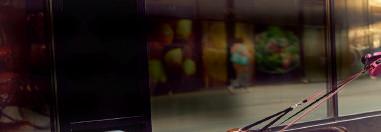
The two went on to host weekly dance parties and picnics—which grew from crowds of fewer than 100 people to an

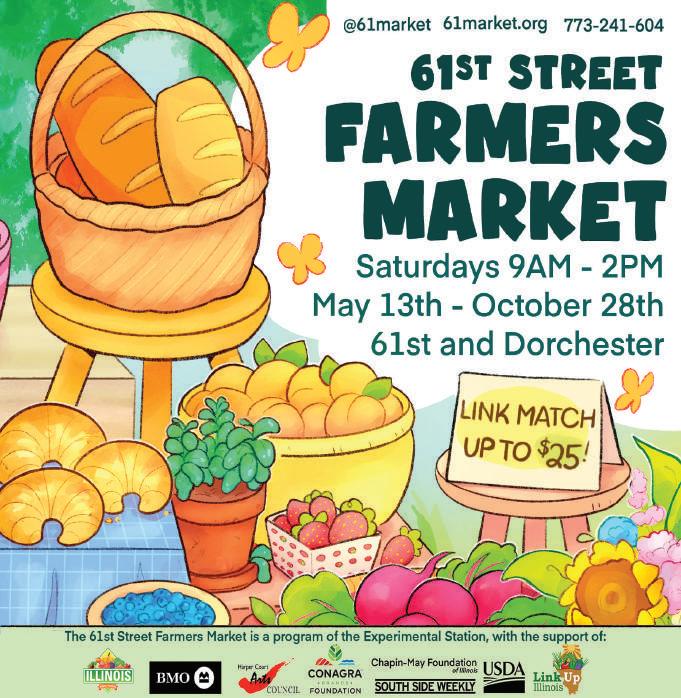

JULY 13, 2023 ¬ SOUTH SIDE WEEKLY 11 South Side,
Side, New York, London and beyond were all represented at the Chosen Few DJs Picnic and house music
in
on
West Side, North
festival
Jackson Park
Saturday, July 8, 2023.
Contact us today for your FREE mortgage consultation! EQUAL HOUSING OPPORTUNITY Draper and Kramer Mortgage Corp. (NMLS ID # 2551 (www.nmlsconsumeraccess.org) IL:MB.0004263) an Illinois Residential Mortgage Licensee located at 1431 Opus Place, Suite 200, Downers Grove, IL 60515. Telephone 630-376-2100. Regulated by IDFPR located at 100 West Randolph, 9th Floor Chicago IL 60601. Telephone 312-814-4500. © 2023 Draper and Kramer Mortgage Corp. All Rights Reserved. 04600-92. 6/2023. * annual percentage rate 630-324-5799 15 YR FIXED: 5.750% | 5.853% APR* 30 YR FIXED: 6.990% | 7.056% APR* as exact quotes but a reasonable approximation for informational purposes only, are subject to change without notice and may be subject to pricing adjustors related to programs are available based on the individual needs of the applicant This information does not constitute a loan approval or commitment and is not an invitation to extend underwriting guidelines.
PHOTO BY MARC C. MONAGHAN, HYDE PARK HERALD
MUSIC
average of 3,000—offering a “familyfriendly take on house music. “One Love, One House” is the motto behind their mission as the picnic celebrates its twenty-year anniversary this year. “House music is love. House music is unity. House music is oneness within yourself,” said Lowell Gray. “From a lawyer to a two-time felon, it’s all love. No

Workers at Museum of Science and Industry Unionize
matter who you are or what background you come from, it’s all love with house music.”
“I’ve never seen a genre bring races, genders, and socio-economic classes all together (like house),” said Wynell Gray. With a tag team set by Chosen Few DJs Tony Hatchett and Wayne Williams, another picnic was brought to a close. ¬
 BY MALIK JACKSON
BY MALIK JACKSON
When Al Pope and her fellow guest engagement facilitators, educators and other workers at the Museum and Science Industry returned from their COVID-19 furloughs in 2021, they were stunned to find that many of its pre-pandemic hazards remained.
“There are some physical dangers we have to worry about in our job,” alleged Pope, a guest engagement facilitator. “But once we were post-pandemic, we realized there was no separate budget for coronavirus sick time…(that) there were still days that were ‘ineligible’ for us to take off, and the burnout that we had experienced before the pandemic became life-threatening.”
Beyond this, Pope alleged, workers struggled with minimal PPE accommodations, pay inequity for front line staff and lacking benefits and opportunities for growth. As museum workers felt increasingly vulnerable, Pope said, they felt emboldened to unite and advocate for themselves with a union.
“The connotation of what our jobs were really changed in the face of unprecedented
times, but once we got back and realized that a lot of the same issues were in place … we realized this is something that we needed,” she said.
This June, after a year and a half of organizing, workers at the Hyde Park museum voted seventy-nine to twenty-six in an election with the National Labor Relations Board to form a union— the Museum of Science and Industry Workers United (MSIWU). An affiliate of American Federation of State, County, and Municipal Employees (AFSCME) Council 31, MSIWU will represent about 140 workers in the museum’s guest experience, operations and education departments.
In doing so, workers also joined a wave of organizing at cultural institutions across the city. Over the last eighteen months, AFSCME Council 31 has helped to unionize workers at the School of the Art Institute, the Field Museum, the Notebaert Nature Museum, and the Newberry Library.
“There’s no question that I think these
12 SOUTH SIDE WEEKLY ¬ JULY 13, 2023
Mayor Brandon Johnson and State’s Attorney Kim Foxx dance onto the stage during the Chosen Few DJs Picnic and Festival in Jackson Park on Saturday, July 8, 2023.
PHOTO BY MARC C. MONAGHAN, HYDE PARK HERALD
Chicago house legend Jamie 3:26 performs during the Chosen Few Picnic and Festival in Jackson Park on Saturday, July 8, 2023.
PHOTO BY MARC C. MONAGHAN, HYDE PARK HERALD
PPE accommodations and pay inequity were among the issues that spurred the union drive.
cultural institutions have traded on their prestige for a long time, and have used that as a means to take their employees for granted,” said Anders Lindall, Public Affairs Director of AFSCME Council 31. “These institutions in essence have more or less said ‘you’re lucky to work here… working here and being in proximity to our collection is its own reward.’ But of course, that doesn’t pay the bills.”
But MSIWU’s campaign faced resistance. After workers went public with the union organizing drive in April, museum administration enlisted the services of Jackson Lewis, a notorious antiunion law firm. The administration soon launched Informed Choice, a campaign which provided “facts and figures” on unions with standalone websites, posters in the workplace and other materials.
In interviews, workers alleged that the campaign instead spread misleading information about the union, with material frequently suggesting that AFSCME is an outside (“third party”) agitator and that the cost of being in a union (i.e. monthly dues) outweighed the benefits.
“The Museum of Science and Industry respects our employees’ right to choose or decline union representation,” said a museum spokesperson. “Due to the importance of this choice and the fact that many of our employees do not have experience with union representation, MSI provided honest, factual information to its employees about unionization. MSI is not anti-union.”
“I think it just underscores one of their most transparent tactics, which was to pretend that somehow the union is separate, outside, alien and therefore scary,” Lindall said. “When in fact, the union is the workers who come together to address challenges that they see and want to build something better for the communities they serve.”
Workers mobilized against the alleged anti-union efforts in late April, hosting a rally on the steps of the museum to demand that management end its “divisive campaign of misinformation meant to confuse employees.” Joined by the likes of Cook County Board President Toni Preckwinkle, Alderwoman Jeannette Taylor (20th), Alderman Desmon Yancy (5th) and Chicago Federation of Labor President Bob Reiter, workers delivered a signed pledge committing to "free and fair (union)

organizing" to the museum’s CEO, Chevy Humphrey, asking her to publicly commit to not interfere in organizing efforts.
In an emailed statement about the election, an MSI spokesperson said, “Some of our employees voted in favor of union representation and others voted against representation … Our priority remains
“Our break rooms are on different levels of the museum, our schedules don’t line up so that we see so many people in a day,” they said. “Through working on this effort we have gotten to know more people than we knew before…we’ve kind of grown to understand that we all work here, and we work here because we want to and because
relationships with every coworker and sharing experiences, has enabled workers to come out of those silos and realize how much they have in common.”
“It’s about food security. It’s about being able to go to school, it’s about being able to have a family,” Pope said. “We love these jobs, but it’s important for the person next year to not be absolutely going through it.”
Reflecting on what unionizing could mean for their professional development, Jameson said, “I've had the opportunity to see some of the behind the scenes of MSI but, when we are able to more clearly establish mobility within and between departments, I may have a chance to forge a career at a museum that I already know and love.”
continuously building a positive workplace culture that supports the Museum of Science and Industry and benefits the greater Chicago community.”
Kristen Jameson, another guest engagement facilitator, said that even before management brought in Jackson Lewis, it felt as though workers were alienated from one another “by design.”
we do love the museum.”
Lindall, who has over the past year assisted dozens of museum workers across the city with organizing campaigns, echoed this sentiment. “A really frequent thing that I have heard is workers saying that they have been isolated and siloed,” he said. “That process of organizing, which is really all about talking to one another, building
Next up for the union is the formation of a bargaining committee and conducting a bargaining survey, wherein workers will voice their desires, and a contract will be negotiated with the museum’s administration. ¬
Malik is a contributing writer for the Weekly. He last covered two young filmmakers from opposite sides of the city.
JULY 13, 2023 ¬ SOUTH SIDE WEEKLY 13 LABOR
Museum of Science and Industry workers hold a rally on the front steps of the institution, 5700 S. DuSable Lake Shore Dr., demanding that management end alleged union-busting efforts on Wednesday, April 26, 2023.
PHOTO BY HANNAH FARIS
“There’s no question that I think these cultural institutions have traded on their prestige for a long time, and have used that as a means to take their employees for granted.”
—Anders Lindall, Public Affairs Director of AFSCME Council 31
DJ Hustlenomics on His Start, the Chief Keef Era, and New Ventures
BY KIA SMITH
DJ Hustlenomics is a presence that most people only experience once. He’s a recluse at times, very calculated, and as multifaceted as they come, with varying interests in music, technology, fashion, and cannabis. He is rarely seen or heard, but his impact is felt—people don’t realize that he helped launch the careers of prominent Chicago artists.
As a teenager, his natural talent and simply being at the right place at the right time led him to lend his voice and cosign artists who will be forever known as Chicago legends, solidifying his place in the history of drill music—a Chicago sound known for its gritty, violent lyrics over dark catchy beats.
In 2010, he was a typical sixteenyear-old Harlan High School student from Chatham who listened to his friends rap during class and in the lunchroom. After those same friends dubbed him “DJ Hustlenomics,” he began to navigate his way through the early days of “The Blog Era” by hosting mixtapes for notable Chicago artists at the time, such as S.Dot, Tink, and Chief Keef.
The Chief Keef era catapulted Hustlenomics into the limelight as one of Chicago’s most coveted mixtape DJs— almost every artist from Chicago wanted a cosign from him. As that wave ended and while dealing with his own personal struggles, something in Hustlenomics shifted, and he began to expand his creative empire.
South Side Weekly got a chance to sit down with DJ Hustlenomics and discuss his humble beginnings, the once-in-a- lifetime opportunity to help build Chief

Keef’s career, his newer ventures in the fashion and technology space, and, of course, music.
This article has been edited for length and style.
SSW: You attended Harlan High School in their seventh and eighth grade program. What core experiences led you to create DJ Hustlenomics?
DJ Hustlenomics: I didn’t start getting into music until probably freshman year. I left Harlan after eighth grade because something in my brain was telling me I needed a change of environment, and Harlan wasn’t a school I thought I’d be in. I ended up not liking the school I was at; I didn’t know anybody, and it was far out west. It was a whole different genre of people, so to say, and I was out my comfort zone. And being young, you don’t really know how to adjust to that.
So I came back to Harlan sophomore year and my two friends, Iyon and Tone, happened to be rapping, doing their own thing. So I told myself, why not jump in? My pops has been a house [music] DJ all his life since he was the age I started [in highschool]. So it was kind of in me already, and I found my own lane with DJing and added my cosign to music, and that’s where everything started to blossom.
So with your friends Iyon and Tone, did you start hosting their mixtapes or projects first? How did you land into that?
It’s crazy, because I don’t think they even ended up dropping music. They dropped some music, but I wasn’t even fully
14 SOUTH SIDE WEEKLY ¬ JULY 13, 2023
MUSIC
The legendary collaborator talks about his humble beginnings, the once-in-a-lifetime opportunity to help build Chief Keef’s career, and new projects in the fashion and technology spaces.
DJ Hustlenomics
PHOTO BY THOUGHTPOET
DJ Hustlenomics yet. I still didn’t have a name for myself, I didn’t have an alias or anything. I kinda was just like, “Oh, y'all doing music? That’s pretty cool. Let me surround myself with y'all and see what I can do with this shit.” It’s kinda like they stopped rapping and I went all in with music. It’s a weird situation, but we all embraced each other and the paths we took with it.

What made you come up with the name Hustlenomics?
I actually didn’t come up with that name. An old highschool friend named LB came up with that name one day on Facebook. I don’t even remember if that was before we had physically met each other yet. People like Iyon and Tone were telling me that it was this dude that be freestyling in school and in the lunchroom. We ended up being friends on Facebook, and I remember asking for name suggestions. And that was his suggestion, and it’s been that ever since.
So when people ask you what does Hustlenomics mean, what’s the answer you typically give them? Like what does your name mean to you?
Well, over time, my name got shortened to Hustle, and I like that better. And that’s just what I do. No matter what I’m doing, it’s a hustle to it. I used to have T-shirts that said, “Can’t Knock The Hustle,” and for a little minute we sold t-shirts at school and around my neighborhood. It kind of embodies my personality. As life progressed, it really didn’t have a specific meaning when it first came to me, but as life went on and I accomplished tons of milestones, [hustle or hustlenomics] is the word version of my entire personality. If I don’t do nothing else, I’mma hustle, I’mma get to some money.
You are credited for working with a variety of artists, like Tink who is an R&B singer and, notably, Chief Keef, who is known for being the face of drill music. How did you get in tune with both? Is the rumor true that you discovered Chief Keef?
With Tink, I met her through someone who goes by Molly. She wasn’t a full-
fledged manager, but she was one of those women who was helping Tink navigate her way through the music industry, helping her find studios, helping her make connections here and there. I knew Molly through a few of my people, and she was like, “Hustle, you should host Tink’s mixtape,” and it kind of came together from there. Tink thought I would never host her mixtape, and most people thought I was bigger than I was at the time. A lot of people were scared to approach me at the time and as for me—I was always like if I like what you got, let’s make something work. Let’s see where we go from there, and that’s how Tink happened.
With Keef, I didn’t discover him. I started messing with Keef when he was like sixteen, seventeen, and he had been making music on YouTube since he was like thirteen
or fourteen, so I don’t think no one person discovered Keef. I will say that our mixtape blew everything up for him because it was surrounding a lot of controversy he had at the time for him. He got into an altercation with the police, and then he got out a few months later, everybody was making viral videos on WorldStar; and the mixtape had already been out, so everybody went back to that.
And then it was my viral random rants on mixtapes that kinda shed light on me. You have DJs like Drama, Holiday, and Scream who used to talk on mixtapes, but nobody ever heard it from a real Chicago perspective. I was shouting out different gangs; I was shouting out shit I didn’t even really know about, and that story in itself is crazy because me and Keef had connected through an artist named S.Dot, who I did like two or three mixtapes with, and Keef
hit me up on Facebook like, “Yeah, you raw. I want you to do my shit.”
Two months passed, and he randomly hit me up one day while I was sick with strep throat, but he was rushing to get the project done. So I just went into my makeshift studio in my bedroom closet, and started rambling and that’s how “Bang” came about.
Was that the first mixtape you hosted for Keef?
Yeah, that was his first official project, his first official mixtape, which is why the rumor got started that I discovered him. It was DJs like DJ Amaris that was already in tune with Chief Keef. He was still a kid, though, and in the streets for real, so it was hard to get up with people musically when you’re doing stuff like that.
Did you ever anticipate that you and Keef’s career would take off in the way that it did?
Looking at where Keef is now and looking at all the things I’ve done over time, not at that time, no. This was a fresh sound, this is turnt, this is Chicago. It was just me cosigning it. I never knew that he would get into it with the police. And who’s to say if that chain of events didn’t happen, would he be even bigger? Everything that happened in Keef’s life is a part of his whole [upbringing]. So it’s like, nah, you wouldn’t of known. It was just having faith in another Chicago artist at the time.
With you being a natural born hustler, you eventually pivoted and shifted to other areas of entrepreneurship. A few years ago, you decided to cater to women with a clothing line called Hustle Honeyz. What inspired you to cater to women with that line?
Hustle Honeyz is a decades old collaborative idea that was brought to me by a former teacher who worked at [Gwendolyn] Brooks. The original idea he brought to me was, you know, you DJ, you DJ parties, you DJ events, you had something for artists, you need to have an
JULY 13, 2023 ¬ SOUTH SIDE WEEKLY 15 MUSIC
PHOTO BY THOUGHTPOET
entourage of women to be in the crowds promoting and passing out stuff. And over time, it just evolved.
I know so many women that do entrepreneurial things. In their career field, they just work hard. My mom works hard, my grandma still works, and I just know a ton of women who just do different stuff. So it just grew into an appreciative gesture or brand to just shine on women. Whatever you’re doing, you’re a Hustle Honey.
Do you foresee Hustle Honeyz growing beyond clothing? What would you like to see it evolve to?
I definitely want to see Hustle Honeyz grow into a brand or philosophy. I want to be able to grow the funds of the brand to do a lot of things for women, like open up women-only establishments, like it might be a Hustle Honeyz Nail Salon, or a full fledged spa. Anybody could come, but it would have perks for women that are low-income to make them feel they are deserving of the things people of a higher status may get. I want to sponsor womenled events and other women-built stuff. I definitely want a brand that’s surrounded by women and eventually controlled by women. I don’t want to control the brand, I just want to maintain the reputation.
Shifting back to the music, when people often talk about Chicago’s music scene and specifically the drill music scene, your name is often left out of the conversation. Does that make you feel slighted in any way?

Sometimes it does, but at the same time, the type of person I am and personality I have, it’s kind of like I shifted away from it at the right time. Most recently, I was in my audio-engineering phase working with the same type of artists, and it’s like the same things: they’re either gonna go with who’s convenient, or they switch up, or they just have a lot going on in the streets and it’s just inconsistent.
So I don’t see myself being around those types of artists long-term, if we’re being honest. I love working with them. I love the sound they bring to music. A lot of them have good energy, and a lot of them have good personalities in the studio.
Regardless of the type of music they put out or the level of violence within that music, a lot of them are pretty cool people, but working long-term in business is just not my environment. I’m an introvert, so knowing I had to watch my back being a part of this entourage is just not really a big thing to me.
=So to be slighted in conversations about who did what, everybody knows who did what at the end of the day. They can’t take away that I did Keef’s first mixtape; you can’t take away Winter’s Diary. People not even from Chicago still hit me up about that. Dreezy, other artists I’ve worked with.
That stuff is solidified. So it’s not too much I can be salty about.
In what ways are you continuing to work with artists? Is it more on the audio engineering side or the A&R side?
I’d definitely say a little bit of both. I think 2017-2018 is when I really started audio engineering. I’ve been knowing how to do that my entire time in music since like 2011-2012, just by watching other people and using the same software they use to do my mixtapes as you do recording. But as the hosting died down and I just got
back by myself—I lost a grandparent. I was trying to find my way back into music and audio engineering was a way for me to make money every day. I can be with the artist from phase one of the music creation, so that was my way back in and what I’ve been doing for the past five years now.
At one point, you went ghost and was very quiet on the music side. What was happening during that time period that made you stop?
A [romantic] relationship that came out of the blue, and that was a whole different everyday feeling of going to the studio and coming home drained. I got comfortable with that, and that was a part of me falling out of my connection with the music scene. A lot of it isn’t just artists leaving me out; a lot of it was me just removing myself from the equation. A lot of times I could have been in a studio session [but] I would rather be laid up because it was a lot more peaceful for me. Then I lost my grandad, and he barely knew anything about this music. He didn’t know no damn Hustlenomics or anything, so that was a real sting to the heart because it’s like he passed randomly without him knowing about my accomplishments or anything. Then the next year, I lost my grandmother, so that was a double whammy. It was just a lot of times where I didn’t feel the need to share. I didn’t feel like I was going to be in the right space to be around artists and egos and stuff like that. Because if I was around those situations, I would quickly remove myself again, and that felt like wasted time to me.
After experiencing the losses of your grandparents and transitioning out of that relationship, what inspired you to get back to the things you enjoyed?
Just knowing I wasn’t average. During the duration of my relationship, I wouldn’t say that I burned bridges, but it was like certain stuff wasn’t worth the time, money, and headaches anymore. I stopped answering for certain artists. If it seemed like they weren’t trying to do anything real serious, I probably stopped answering for them. When the money
16 SOUTH SIDE WEEKLY ¬ JULY 13, 2023 MUSIC
PHOTO BY THOUGHTPOET
slowed up on my entrepreneurship, I had to get a regular job, and that shit was so depressing. I was like, “If I was making X amount of dollars in one day or one week doing X amount of hours worth of work, then I’m not supposed to be here feeling like a robot, a machine.” That’s where engineering came in, because I was like, “What’s the best thing I could do to make money and feel like I’m locked back into the music scene?” So I started from there and started renting out studios.
If you had a time machine, do you think you would do anything differently in terms of your journey and career?
I would do a lot of things differently. It’s a lot of people that I connected with that I probably wouldn’t have. I’d definitely keep my name a little more rare. I feel like I made my name a little too in-house over that period of time. I definitely wouldn’t have took on so many projects, especially when the few projects and few artists that actually took off would’ve been enough, but you wouldn’t have known that. It seemed like everybody had potential back then. Definitely networking choices, definitely choosing when and when not to pop out. I definitely became a recluse a little too much.
What advice would you give DJs or entrepreneurs who have multiple passions on how to balance it all?
Definitely have some consistency. Or at least try it out and know if this is something you want to wake up to everyday. Right now, I’m learning what I’d rather wake up and do everyday, even if it’s seven different things a week. If I like waking up and spending twelve hours on this today, then cool, I’ll do this. I’m learning more of what to put my time and effort into.
If you are multipassionate like myself, definitely try to get your ten thousand hours in everything you want to do. If you wanna learn how to make T-shirts and build your own brand, get your ten thousand hours in and learn how to work heat presses, etc. If you want to learn how to make music, if you want to learn how to be a rapper or DJ, learn how to use the software and spend your ten thousand hours and focus on it.
What keeps you inspired?
Just wanting to be somebody and living comfortable at the end of it all. Just knowing where we grew up from on the South Side of Chicago, just seeing what happens when you don’t hold on to those inspirations, or if you don’t have any aspirations at all. Some people walk around with no inspirations at all, and we see what becomes of those people. Not to be super judgemental, but it’s like you have to have some type of passionate interest to keep you level headed these days and from falling into the wrong crowds. It’s also about wanting to provide for the people around me and wanting to see the people around me happy and enjoy life as well. Even though money shouldn’t be an issue, we gotta go to work and make money, so why not do something you love waking up to do everyday and share the fruits of your labor with the people you love and who supported you through it all?
What can we expect from you in this new decade?
I’m hoping to build my own brand for DJ Hustlenomics. For the past ten years, I was a cosign on everybody else’s brand. I cosigned Keef and Keef blew up, and he has Glo Gang. I want DJ Hustlenomics to be a powerhouse brand. If someone needs engineering for their whole album, they can come get it from the Hustlenomics Empire. If a woman is having a release party or throwing something for the kids, I want Hustle Honeyz to be part of it. So just building a personal brand for myself and not being attached to somebody that may not last or someone who may not give me the credit I deserve. Just building something that I know I can’t be discredited. ¬
Follow DJ Hustlenomics on Instagram and Twitter @djhustlenomics for updates.
Kia Smith is a lover of words and digital storyteller. She previously wrote about Vicki Street for the Weekly. Keep up with her on Twitter and Instagram @KiaSmithWrites_.
Restorative Justice Court Promises an Alternative for Young Adults
BY MAX BLAISDELL
Acouple blocks west of 69th Street and Halsted Avenue, in a large, nondescript Salvation Army office building, the Restorative Justice Community Court (RJCC) of Englewood is changing the status quo. Englewood’s RJCC works with participants from select South Side zip codes to divert young people charged with nonviolent crimes away from the criminal legal system and towards a second chance.
This location is one of three restorative justice courts in Chicago—the others being in North Lawndale for West Side participants and Avondale for North Side participants—that are part of a relatively recent program started by the Circuit Court of Cook County and overseen by the Office of the Chief Judge, Timothy Evans.
Unlike the criminal justice system, which employs punishment via incarceration, restorative justice holds that violence, and other legal or normative violations, are best addressed by bringing together those most affected by the harm, including the wider community, to discuss what should be done to repair that harm. The practice is related to but different from transformative justice, which contends that the oppressive structures giving rise to harms must be addressed first and foremost.
Restorative justice has gained traction as an alternative to addressing harm. In
recent years, Chicago Public Schools, for instance, have replaced School Resources Officers in certain high schools with deans of culture who are responsible for implementing restorative practices.
Advocates claim that their introduction will limit the school-to-prison pipeline by shifting away from the zero-tolerance model of discipline. That model often resulted in the disproportionate suspension and expulsion of Black and brown students, especially boys, leading them to drop out of the educational system entirely and fall into the criminal legal one. Restorative conversations led by trained practitioners and with teachers and other students participating promise different outcomes.
Though the RJCC is across the hall from a probation office, there are subtle ways in which the RJCC distinguishes itself from a traditional courtroom setting.
Since 2020, when it launched, the court has met in a prototypical office space—bright fluorescent lights overhead, white gypsum ceiling panels, and gray carpeting. It’s quite dissimilar from the august, impressive courtrooms of the Leighton Criminal Courthouse on 26th St. and California Ave. where judges preside from raised wooden benches, peering down on counsel and defendants alike, while spectators struggle to make out the proceedings from behind protective bubble
JULY 13, 2023 ¬ SOUTH SIDE WEEKLY 17 JUSTICE
The practice, started in 2020, is part of an approach to addressing harm that brings together those affected and their community.
glass.
Along the walls of the RJCC, where in traditional courtrooms portraits of U.S. presidents might hang, are instead posters of Malcolm X and Angela Davis bearing inscriptions with inspirational quotes: “There is no better teacher than adversity,” and “We must always attempt to lift as we climb,” respectively. On the far wall, a green Sankofa bird picks up an egg in its mouth, representing the retrieval of ancestral knowledge, near where an American flag would likely stand as a symbol of the power and authority of the state.
Donna Cooper is acting presiding judge of the Juvenile Justice Division of the Circuit Court of Cook County, situated at 2245 W. Ogden Ave. on the Near West Side, but she spends her Wednesdays at Englewood’s RJCC, reviewing blue case folders from a large neat stack.
She is easy to miss seated at the square arrangement of tables, surrounded on all sides by the various persons who normally fill in a courtroom—a stenographer, a public defender, a couple of clerks— and some who do not, like the RJCC coordinator Marlo Norman and the RJCC case manager Craig Carrington.
A small woman, Judge Cooper doesn’t wear black robes or beat a gavel while overseeing proceedings at the RJCC. On this particular Wednesday she wore a powder blue pantsuit, a multi-colored scarf, and dangly earrings. Her toes poked out of light blue slides that matched her outfit.
Cooper grew up in Englewood and hasn’t strayed far from Chicago in the years since. She attended Northwestern University in Evanston for her bachelor’s degree and then completed her juris doctorate at DePaul University. First elected as a judge in November 2008, Cooper has been called by Chief Judge Timothy Evans, “an excellent judge who understands the importance of helping troubled young people become good citizens.”
The cases tended to follow certain patterns. Most of the participants, who were read into the record without their presence in the room, were male, young, and facing criminal charges for the first time, typically for unlawful use of a weapon or possession of a stolen motor vehicle.
Carrington, the case manager, confirmed that these were the kinds of nonviolent felony or misdemeanor offenses the RJCC takes. Participants range in age
from eighteen to twenty-six, and once they go through the restorative program— which involves participating in four to six peace circles, financial literacy and gun safety courses, and mentorship and community service programming—the State’s Attorney’s Office agrees to drop the charges against them, and they can file to expunge their criminal record with the help of Teamwork Englewood.

This is what attracts many of the nearly sixty participants involved in the Englewood RJCC’s program.
Hornemann also commended the collaborative nature of the RJCCs, where the purpose is for participants to get out of the system, instead of the adversarial proceedings in criminal courts, where prosecutors battle defense attorneys for defendants to get the maximum possible sentence.
The RJCC programs are still small. The RJCC programs are still small. Between the three courts, only eighty-two participants are currently involved. And they are limited to people living in one of a select number of
after a stint in Cook County Jail himself, an experience that helps him relate to the youth. “I was really drawn to the approach,” he said, “because we sit in this space where a lot of people who don't have a voice, now [have] a space where everybody has a voice.”
“What motivates me,” he continued, “is the people that I work with, the cases that get dismissed, the lives that get changed, the relationships that I build.”
Derived from Indigenous and African practices, Reed explained, the peace circle has a central rug, a talking stick, and a candle. Each is a symbol—the different colors on the rug represent the different points of view of the participants involved; the talking stick, which is passed only to the left, signifies the respect and attention that must be conferred on the speaker; and the candle acts as a bonding device.
Cooper and Reed’s intimate knowledge of the lives and experiences of their participants helps break down the formidable barrier of their skepticism. “Most of them start off slow, especially at the first circle,” Cooper said. “But as they start to get to know me better and know the process better, that’s when they open up.”
Demarcus M., their first participant of the day—they typically see three to five, depending on how many show up for their scheduled sessions—seemed initially wary of the peace circle process. His arms were crossed and he wasn’t particularly talkative when holding the talking piece. But as the hour-plus conversation proceeded, and Cooper related aspects of his own upbringing to Demarcus’s, his arms dropped and he spoke enthusiastically.
By the third circle, Cooper expects Demarcus to be more comfortable, to let his guard down and reveal more about himself.
When asked why he agreed to participate in the RJCC program even though it was unfamiliar, Demarcus neatly stated the goal himself: “If you don’t take accountability, how can you change?” ¬
Heidi Hornemann, a private defense attorney, said she seeks to transfer her clients to the RJCC system whenever possible. Though she’s only been working with the program for the past nine months, she thinks that it’s been helpful for her clients.
“They get a second chance, and they don’t have to go through the stress of fighting a case in court,” she said.
zip codes in Cook County.
Fred Cooper is a practiced and nonjudgmental steward of the peace circles. Cooper, forty, who grew up in Chatham and has lived in Englewood for the past 10 years, has been leading peace circles for the past eight years. He and Javion Reed are the peace circle keepers at the RJCC in Englewood.
Cooper got involved in peace circles
Max Blaisdell is an educator and basketball coach based in Hyde Park. He is originally from New York City and later served in Peace Corps Morocco. He last covered a panel connecting abolition in Chicago with demilitarization. He’s also a staff writer at the Hyde Park Herald
18 SOUTH SIDE WEEKLY ¬ JULY 13, 2023
“What motivates me is the people that I work with, the cases that get dismissed, the lives that get changed, the relationships that I build.”
—Fred Cooper, peace circle steward
A peace circle at RJCC.
JUSTICE
PHOTO BY MAX BLAISDELL
Public Meetings Report
ILLUSTRATION BY HOLLEY APPOLD/SOUTH SIDE WEEKLY

A recap of select open meetings at the local, county, and state level.
BY SCOTT PEMBERTON AND DOCUMENTERS
June 19
The inaugural meeting of the 8th Police District Council (Chicago Lawn) saw council members taking questions from attendees, asking them to complete a survey about the role of the council, and resolving technical issues, including website and email access, to support the council’s goals to be more transparent and accessible. This district is the second largest of the city’s twenty-two police districts. It comprises nine wards and ten community areas, including parts of Ashburn, Archer Heights, Chicago Lawn, Gage Park, Midway, and West Lawn. The council plans to rotate its monthly meetings to each of the community areas in the district. The district councils are one of two new bodies launched this year to ensure “police oversight, accountability, and public safety,” according to the initiative’s website. The other agency is the Community Commission for Public Safety and Accountability (CCPSA). While the districts’ responsibilities are to “improve policing and public safety, the CCPSA is charged with advancing “systemic reform.”
June 20
The day after the Chicago City Council Committee on Zoning, Landmarks, and Building Standards approved the Warehouse as an historic landmark at its meeting, City Council made it official. From 1977 to 1982, when the City closed it amid building safety concerns, the Warehouse made its mark as the birthplace of House music. The popular West Loop nightclub at 206 S. Jefferson was also considered a safe space for Black and queer Chicagoans. Landmark status offers protections from demolition and some alterations. Two other notable decisions were made by the Committee: an iconic Hamm’s beer sign can now be displayed again outside Archie’s Iowa Rockwell Tavern., and an amendment to “Planned Development No. 965” was presented to ensure that cannabis-related business activities can be approved at Scottsdale Shopping Center at 79th Street and Cicero Avenue.
June 21
At its meeting, the Department of Public Health’s Board of Health learned more about an initiative to measure the intensity of hot weather in Chicago. The City will be part of a nationwide effort to track temperatures in eighteen cities on a single day in July (the day was not specified in the meeting). The program is administered by the National Oceanic and Atmospheric Administration. Two hundred volunteers are needed to follow routes in the city with sensors attached to their cars. In 1995, South and West side residents were hardest hit during a five-day heat wave that took more than seven hundred lives, mostly poor, elderly, and Black. The committee also heard about Chicago’s broader environmental health plans under a Healthy Chicago 2025 initiative, whose goal is to reduce the city’s racial life expectancy gap by dealing with environmental factors. About $30 million in American Rescue Plan funds and bonds are on the table for several new environmental justice initiatives, including a network to monitor air locally, remediation of polluted sites, and an impact assessment to measure results.
At its second meeting with recently elected Mayor Brandon Johnson presiding, the City Council addressed two settlement payments, both of which were approved unanimously: one for one million dollars to the estate of Sharell Brown, who was killed by a CPD officer in May 2019, and another, in an unrelated case, to Arthur Brown for $7.25 million. Brown
wrongfully spent thirty years in prison for an arson and two resulting deaths he wasn’t responsible for. He also received the same amount from Cook County. The Council spent no time on Arthur Brown’s settlement, but there was some back and forth over the Sharell Brown settlement, which was approved by a vote of thirty-five to fifteen. The Council also passed resolutions recognizing Pride Month, Juneteenth and the Alpha Kappa Alpha sorority, whose headquarters is in Chicago at 5656 S. Stony Island Avenue. Founded at Howard University in 1908, Alpha Kappa Alpha is the first sorority for Black women. Alumni include Vice President Kamala Harris, novelist Toni Morrison, and actor Phylicia Rashad.
June 28
At its meeting, the Chicago Board of Education got a look at the proposed 2024 fiscal year budget for CPS, which comes to $9.4 billion (an increase of $500 million), and received an update on Whole School Comprehensive Safety Plans. They are designed to give schools and their Local School Councils (LSCs) the opportunity to consider the needs of their individual schools in a unified way. This approach took effect in 2021, after school safety commanded more attention in 2020 amidst calls for the removal of school resource officers (SROs). These SROs were supplied by CPD at an annual cost of $33 million. Each spring, LSCs choose how they will use SROs in their schools: two officers, one officer, or no officers. Those that cut back or eliminate SROs are supposed to receive the corresponding funds for other items, such as culture and climate positions like social workers or therapists. Board president Miguel del Valle, who faced protestors outside his house in 2020 due to his support of SROs, announced his retirement this month. Broadly, the CPS 2024 fiscal year budget breaks down into $8.5 billion for operations (day-to-day expenses); $155 million for the capital budget, which is used for school buildings and infrastructure; and $785 million for debt service—payments for principal and interest on bonds issued to fund the capital budget.
June 29
At its meeting, the Cook County Board of Commissioners voted in support of two resolutions aimed at supporting and protecting queer and trans-affirming care and expression. Public commenters largely supported this stance, but some argued that it wasn’t enough. Latonya Maley, executive director of Affinity Community Services, thanked the commissioners for pushing the resolutions forward. Other commenters called for better maternity benefits, especially where it concerns the treatment of Black women and birthing by hospitals. Resolutions to inquire and work to understand and improve the treatment of Black women in hospitals, especially in regards to birth, were passed unanimously. There was a show of support for workers and small business through wage increases and better parental leave for SEIU Local 73 members and small business grants. Commissioners addressed myriad other items during the three-hour meeting, including support for a statewide prohibition on the sale of flavored nicotine products; which thirty-five sheriff’s department positions were reclassified (and why); a commissioner commending Fair Transit South Cook Pilot Program for “stellar performance” and an increase in Metra ridership; and concerns about information sharing between the sheriff’s department and other government agencies. Several commissioners voiced support for Wear Orange Month (June) as it was ending. The month calls attention to the tragedy of gun violence.
The selection of a new CPD superintendent is moving forward,the Community Commission for Public Safety and Accountability Civilian Office of Police Accountability (COPA) reported during its meeting. COPA has interviewed several candidates; three nominees will be selected in a closed meeting and sent to the Mayor by July 14. The mayor has until August 14 to choose one of those candidates or reject them, explain why, and ask COPA for three new nominees. Among COPA’s stated goals is to address a backlog of aging cases. Chief administrator Andrea Kersten explained that the process, which would begin July 1, includes 1,400 cases ranging from two to four years old. She believes delays in resolving cases might affect disciplinary action and wants cases resolved in two years in the future. Cases related to violation of Rule 14, which prohibits officers from making false reports, and officer-involved shootings will not be considered during this process. Updates on progress towards other goals included that the Commission has received an officer wellness strategy from CPD, that some officers are completing a training program, and that CPD has reported distribution of guidelines about how to treat migrants.
This information was collected and curated by the Weekly in large part using reporting from City Bureau’s Documenters at documenters.org.
JULY 13, 2023 ¬ SOUTH SIDE WEEKLY 19
POLITICS

20 SOUTH SIDE WEEKLY ¬ JULY 13, 2023
Congo Square Theatre Puts on a Festival for the Community
With one event still scheduled during the Silver Room Block Party, the company highlights emerging Chicago playwrights.
 BY KRISTIAN PARKER
BY KRISTIAN PARKER
Smokey skies and concerning air quality didn’t stop community members and theater lovers from supporting a small group of young, emerging Chicago playwrights in late June. Dozens came out to the first two of three theater festival events put on by Congo Square Theatre, as part of its 2023 Festival On The Square celebration.
In honor of the theater company’s 25th anniversary, the expanded Festival On The Square partnered with three South Side venues, bringing the theater to audiences in their own communities. Festival events this summer included Retreat at Currency Exchange in Washington Park on June 22 and Boxville Marketplace in Bronzeville on June 28. The third event will take place on July 29 at the Silver Room in Hyde Park, in conjunction with the Silver Room Block Party.
The festival has been around for more than a decade and went on a brief hiatus at the beginning of the pandemic but has been hosted annually for the past three years. The majority of the readings from the event at Boxville were excerpts from full-length plays written by their 2022-23 Next Up Fellowship fellows, including The Playgrounds by Bair Warburton Brown and The September Show by Helaina Coggs, both directed by Malkia Stampley Johnson. The festival also included a reading of the ten-minute play Tisha, Rita, and Mary Lee vs. The World by incoming 2023-24 fellow Maria D. Smith, directed by Ken-Matt Martin. Each of the first two festival events brought out distinctive crowds that represented the type of stories told. The first event, held at the Retreat, welcomed a mature, intergenerational crowd.
Everyone from millennials to boomers frequent the space and were present to support the theater’s first staged reading, of play Welcome to the Blue Swan, which follows trumpeter Jimmy Earl Brown and a group of friends preparing for a darts tournament at a St. Louis lounge.
The readings at Boxville, however, reflected the next generation of Chicago playwrights. Congo Square ensemble member and playwright Aaron Todd Douglass mentored fellows through the Samuel G. Roberson Next Up Fellowship. Though these playwrights are younger and new to the craft, the stories portrayed a range of relatable life experiences.
2023/24 fellowship winner Maria D. Smith’s play, Tisha, Rita, and Mary Lee vs The World, followed three young women leaving their old life behind in Ohio in search of freedom in the unknown. While The September Show, written by Helaina Coggs, is a humorous take on family and friends navigating changes, trauma, and growth together: for better or worse.
The Boxville event leaned into engagement. Unlike the first event, the readings included physical performances, while strangers and supporters alike connected with one another over free drinks and homemade quality sweets, including vanilla maple fried chicken and
vegan peach cobbler cupcakes catered by Happiness Cupcakes.
Similar to the stories they showcase, Congo Square Theatre has a rich history rooted in intentionality. The theater was founded by graduate students at the University of Urbana Champaign and based on the original Congo Square in New Orleans—a historic national park named in honor of the tradition of slaves who gathered there on Sundays to sing, play instruments, and celebrate. According to Ericka Ratcliff, the artistic director at the company, the mission is to uplift Black stories. Their work is “based on those morals of bringing folks
JULY 13, 2023 ¬ SOUTH SIDE WEEKLY 21 STAGE & SCREEN
Welcome to the Blue Swan reading.
PHOTO COURTESY OF CONGO SQUARE THEATRE
together and making sure that the theater is a haven, a space for Black artists to have a home to tell artistic stories to represent Black culture,” said Ratcliff.
The fourteen-year-old festival, along with other programming and initiatives, is a reflection of their mission, as well as their model of community participation, which the company refers to as “radical generosity, radical commitment, and radical expansion.”
“With radical generosity, that’s our commitment to keeping our productions free or heavily subsidized. For community members, we provide transportation for those who need it so that they can
initiative was “a way for [them] to really show evidence of, here’s the art, the beautiful art that is created. But when we pull these themes out, and we put it into community conversations, here’s how you can contextualize this and put it into action.” The Celebration of Healing series consisted of a total of nine events: a mix of webinars, resource fairs, and screenings.
When asked about how their programming has evolved over the years, Executive Director Charlique Rolle shared how the pandemic provided space for introspection. “I always say it was a blessing for us because it really
'Soot on the Windows Meant Food on the Table'
BY NABEELA WASHINGTON
come to see the show,” said Ratcliff. “We want people to see their stories on stage. But we also want them to understand how pivotal the arts are to community development and organizing.”
Ratcliff added that radical generosity could be the “touchpoint” for people to experience Congo Square for the first time. Whether that be through a free ticket or transportation access to an event, once they attend, the intention is community members will be inclined to remain involved with the organization. This is where radical expansion comes into play.
A new initiative titled “Celebration of Healing,” in collaboration with Steppenwolf Theatre, was developed to address the question of “How do we continue to invest in communities so that we can grow?” said Ratcliff. The programming “aimed to provide audiences with a curated space geared toward individual and community healing” and served as an extension of one of their produced plays, How Blood Go. The play is a generational period piece that explores themes around healthcare inequities in America. The collaborative
gave us time [to refresh] our focus on our vision,” she said. “This is really where our radical tenets always existed within the organization. The pass of the [pandemic] allowed us to dip into digital programming.” From the shift an audio and web series was created, said Rolle, ensuring “that our artists continue to work”.
Rolle described the core of Festival on the Square “being about embracing all mediums of artistic expression, not just performance in plays, but [to] elevate the performance of plays, dance, music, community, community conversations, and just being present within the community to tell our stories and all the artistic ways that they can be manifested.”
The last event of the festival will take place on July 29 at the Silver Room Block Party, itself a cultural staple of the city that is coming to an end. Registration for the final Congo Square event of the summer is free, however, you have to purchase tickets to the Block Room Party. ¬
As visitors enter the Calumet Voices, National Stories exhibit at the Field Museum, they encounter a large banner: “Soot on the windows meant food on the table.” Visitors are quickly presented with examples of the Calumet region’s diverse ecosystem: a set of red-headed woodpeckers, whose soot-covered feathers were a measure of air quality; a Potawatomi beaded rattle exquisitely crafted around a Calumet Baking Powder can; a detailed photograph of Thismia americana, a plant specimen only found in the Calumet region (and too rare to put on display); a massive steel plate embossed with the names of “Rosie the Riveter” women steelworkers during WWII.
Calumet Voices, National Stories, a multi-site exhibition series, first opened in Pullman in 2019, before traveling to Gary and Valparaiso, Indiana. In November of last year, it opened at the Field Museum— and now, for just a few more months, it will showcase elements from all these stops. The show is part of an ongoing effort from museums, libraries, and history centers to highlight the significance of the Calumet region in order to have the area recognized as a National Heritage Area.
A national heritage area is a geographic region that has been recognized and designated by the federal government for its cultural, natural, or historic significance. Heritage areas are stewarded by organizations that receive up to $1 million in annual federal funding to create and share educational resources; curate
opportunities for visitors (and locals) to learn about the region’s history, traditions, and natural environment; and improve air, water, and quality of life through restoration and amenity projects.
Congress designated the Illinois and Michigan Canal as the first National Heritage Area in 1984, and has since created more than sixty heritage areas, including last year’s Bronzeville-Black Metropolis Heritage Area.
You may have explored the Calumet Region while traveling through parts of the South Side, such as Hegewisch, South Chicago, South Deering, and East Side, or in other towns across Illinois and Indiana, including Gary, Hammond, Highland, Griffith, Valparaiso, and others.
Eastern deciduous forests, boreal remnants, and tall grasslands are native to the Calumet Region, which has made it one of the most biodiverse places in the country, though industrial development has harmed these environments. It was also home to the largest steel-producing efforts in the world during much of the 20th century, and remains a site for steel production.
Calumet Voices, National Stories began as an ember fanned by the efforts of the Calumet Curators, a joint collaboration between the Field Museum and the Calumet Heritage Partnership, a network of local heritage organizations.
The creation of such a traveling exhibit—with unique content at each location—is just the beginning of an ongoing effort to support the case for the
22 SOUTH SIDE WEEKLY ¬ JULY 13, 2023
Kristian Parker is a writer and visual storyteller, inspired by sharing narratives that positively shift and shape perspectives.
STAGE & SCREEN
A Field Museum exhibit highlighting the heritage of the Calumet region, and the last in a series of four stops, will come to a close this fall.
“Radical generosity, radical commitment, and radical expansion” is the company’s model for community participation.
Calumet Region as a heritage area.
“The Calumet Curators see the exhibition as a way to showcase the local [but] nationally significant heritage embedded in their collections and archives,” said Madeleine Tudor, a senior environmental social scientist at the Field Museum.
Following a feasibility study, “the Field Museum took the lead on exploring the creation of a partnership with many of the museums identified through the feasibility study process… as a way of bringing together local organizations in a regional context with national significance,” Tudor said. “This is what heritage areas do. An exhibition project is a logical extension of that, and the [Calumet] Curators were very excited to participate.”
The designation of a heritage area is no easy feat, and involves a formal process initiated by community organizations or even government representatives, aiming both to protect and manage the area's resources, and to promote sustainable tourism and community development.
The Calumet Curators are a collective of representatives from more than fifteen local cultural organizations, including the Northwest Indiana Steel Heritage Project, Blue Island Historical Society, and Gary Public Library and Cultural Center. Together, they work to showcase the cultural, natural, and industrial heritage of the Calumet Region through exhibitions and programming in museums, galleries, and local history centers, as well as by offering guidance on uncovering local gems.
“Working with the Calumet Curators to develop the Calumet Voices, National Stories exhibition series has been a dream come true; the Calumet region is so complex, and the exhibit medium is perfect for showcasing particular issues through different perspectives at both personal and universal scales,” said Tudor.
“For someone who has no acquaintance with the Calumet region at all, if you visit, take your time, and go through the exhibit. You will leave with a story of your own. There are a lot of great things and stories that people don’t hear outside of the region, or outside of the narratives that make the news. Across the spectrum of races and economic conditions, it’s an incredible cross-section of what this area is and where it's going,” said Kevin Brown, vice president of the Calumet Heritage Area.
The exhibit that now stands at the Field Museum is a culmination of pieces from each “stop”. Pieces from previous shows highlight and depict milestones in labor and civil rights activism, the fight for environmental justice, and artistic works that interpret the region’s beauty alongside its struggles. Share YOUR Calumet Voice, an interactive element present throughout the exhibition series, asks visitors to share a story or memory associated with a particular place in the Calumet region.
“Traveling all the way from Mexico to
accessible to everyone. Even conceptually, being a big neoclassical building on a hill, it doesn't always feel like it belongs to everyone that may come from a marginalized community,” said Mario Longini, an environmental anthropologist at the Field Museum. “Then there’s significant travel for some, and varying pricing for others. So for certain groups of people, there are barriers to having these experiences in their communities. But this exhibit is our way of signaling to the community that this is here, this is yours.
been introduced to first-person Native perspectives on American history,” Longini said. “That’s why it was crucial for us to reach out to [some of] the original residents of the region, the Miami and the Potawatomi peoples, and invite them to share some of what they wanted visitors to know: their current work on wild rice reintroduction, regional names in their own languages, and other art and video elements that you can see at the Field Museum.”
The first exhibition opened in June 2019 at the Historic Pullman Foundation and National Park Service Visitor Information Center (now the Historic Pullman Foundation Exhibit Hall). Before its incorporation into Chicago, Pullman was one of the formative tissues of the Calumet Region. Now a National Historic Landmark, it was critical to national railroad car manufacturing, and prompted shifts in labor rights and unionism through the 1919 Steel Strike and 1894 Pullman Strike. It was also an early stomping ground for African-American porters. The exhibition was open to the public in Pullman for about six months before moving to Gary, the show’s second “stop.”
But “just as we were getting ready to launch the exhibit at Gary, for that second stop, the pandemic hit and pushed everything back for a few years,” said Brown. The Gary exhibit, titled Calumet: The Land of Opportunity, would eventually open on January 30, 2021 through April 26, 2022 at the downtown Gary Library; a third exhibit, A Calumet Tapestry: Artistic Views of the Region, would launch on May 19 through October 2, 2022 at the Porter County Museum, in Valparaiso. A final fourth exhibit, Journey through Calumet, went on display at the Field Museum on November 11, 2022.
spend one Summer working at a Girl Scout Summer camp! I loved Valpo, it's chill and a very picturesque town,” shared Lily, an exhibit visitor. Responses like Lily’s become part of the exhibition to be encountered by future visitors.
The traveling exhibit helps broaden the usual audience for such exhibits, making these stories more accessible to residents, and even organizations that might find partnerships with larger entities like the Field Museum hard to come by.
“The Field Museum does not feel
This is your story. Here it is at your library. And here it is at the historical society in your neighborhood.”
Aside from these collaborations with the Calumet Curators and other institutions, Calumet Voices, National Stories also wouldn’t have been possible without intentional partnerships with Indigenous community representatives. “The typical way of telling the history of immigration, self-determination, expansion, and industrialization of America does not really include Native American perspectives; most of us haven’t even
For nearly four years, Calumet Voices, National Stories has documented the history (and present) of the Calumet Region in accessible spaces for all to see and enjoy. Later this fall, the exhibition is set to come to a close—but the Calumet Curators and other groups plan to convene to discuss future programs, and intend to continue advocating for a heritage area. Visitors interested in exploring the exhibit can visit through October. ¬
NaBeela Washington is an Alabama-raised poet, editor, and budding art collector. Learn more at nabeelawashington.com

JULY 13, 2023 ¬ SOUTH SIDE WEEKLY 23 HISTORY
The Calumet Voices, National Stories exhibit at the Field Museum. PHOTO COURTESY OF THE FIELD MUSEUM
“Across the spectrum of races and economic conditions, it’s an incredible cross-section of what this area is and where it’s going.”
—Kevin Brown, vice president of Calumet Heritage Area



























































































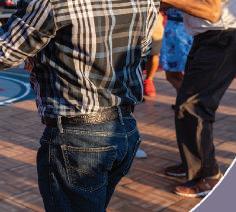





































































































































































































































































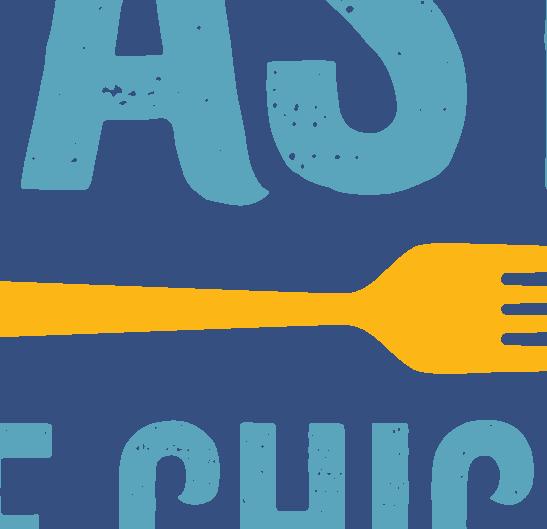





































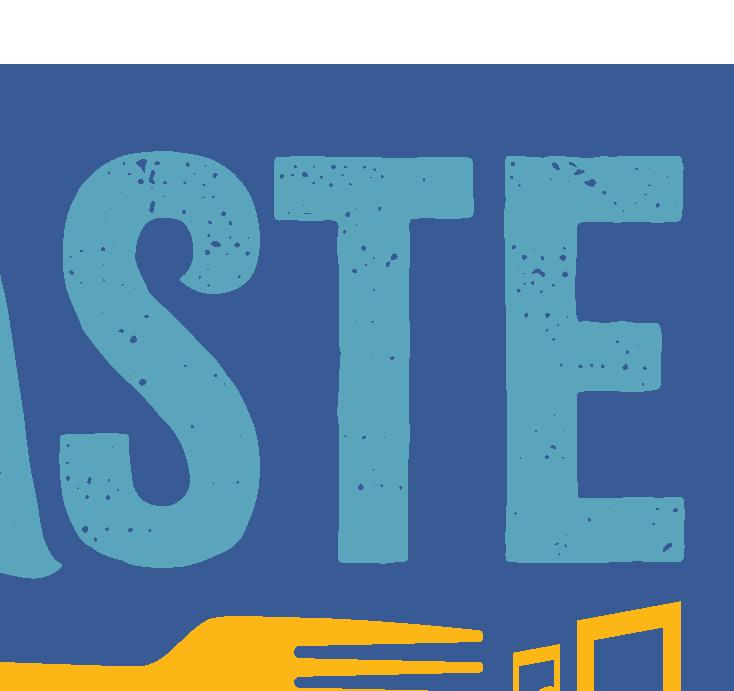
















































































































































































































































































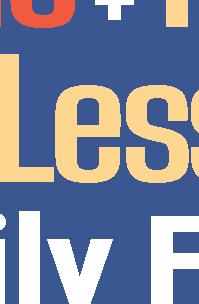















































































































































































24 SOUTH SIDE WEEKLY ¬ JULY 13, 2023 Free Admission TasteofChicago.us Media suppor t from Vocalo MAYORBRANDON JOHNSON
















 by chima “naira” ikoro
by chima “naira” ikoro







 BY MALIK JACKSON
BY MALIK JACKSON







 BY KRISTIAN PARKER
BY KRISTIAN PARKER





















































































































































































































































































































































































































































































































